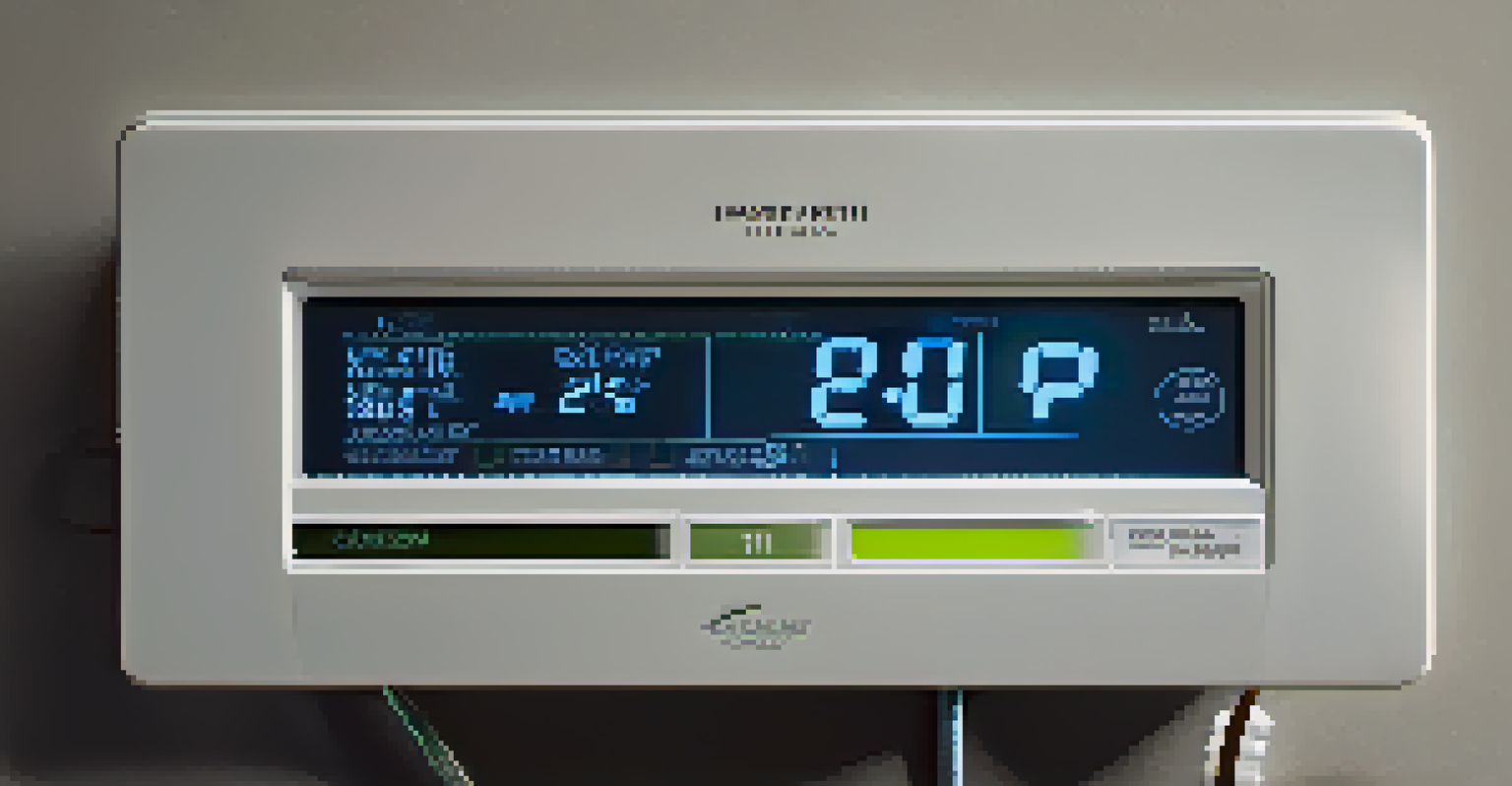Energy Monitoring Systems: Track and Reduce Your Usage

What Are Energy Monitoring Systems and How Do They Work?
Energy monitoring systems (EMS) are tools that help you track and analyze your energy usage in real time. By collecting data from various points in your home or business, these systems provide insights into where energy is consumed most. Think of it like having a fitness tracker for your energy consumption—just as you monitor your steps and calories, EMS allows you to keep an eye on kilowatt-hours and costs.
Energy conservation is a lifelong journey, and the more you know about your energy usage, the better choices you can make.
These systems often come equipped with sensors and smart meters that send data to a central dashboard. This dashboard gives you a clear view of your energy habits, allowing you to identify trends and patterns. For example, you might discover that your heating system uses more energy than you realized, prompting you to make changes.
In essence, energy monitoring systems empower you with knowledge. When you understand your consumption habits, you can make informed decisions about how to reduce your usage and, ultimately, your bills.
Benefits of Using Energy Monitoring Systems
One of the primary benefits of energy monitoring systems is cost savings. By pinpointing high-energy usage times and devices, you can take steps to reduce consumption, ultimately lowering your utility bills. For instance, if you notice that your air conditioning unit is running longer than necessary, you can set timers or adjust the thermostat to save money.

Additionally, these systems promote energy efficiency. They not only help you identify energy hogs but also provide tips and suggestions for optimizing usage. Imagine receiving alerts when your energy consumption spikes; this immediate feedback can lead to quick actions that save both energy and money.
Track Energy Usage for Savings
Energy monitoring systems help identify high-energy usage patterns, enabling users to reduce consumption and lower utility bills.
Lastly, using an EMS contributes to sustainability efforts. Many individuals and businesses are striving to reduce their carbon footprint, and monitoring energy use is a crucial step. By utilizing these systems, you're not just saving money; you're also playing a part in creating a more sustainable future.
How to Choose the Right Energy Monitoring System
Selecting the right energy monitoring system can feel overwhelming, but focusing on a few key features can simplify the process. Start by considering the type of data you want to track, such as real-time usage, historical trends, and cost estimates. Different systems offer various capabilities, so knowing your priorities is essential.
The greatest threat to our planet is the belief that someone else will save it.
Next, think about compatibility with your existing technology. Many energy monitoring systems can integrate with smart home devices, giving you a comprehensive view of your energy consumption. For example, if you already use a smart thermostat, look for an EMS that can connect with it seamlessly.
Lastly, consider user-friendliness. A well-designed dashboard that’s easy to navigate will make it simpler for you to understand your energy usage. After all, the goal of an EMS is to make tracking energy consumption straightforward and actionable.
Installing Your Energy Monitoring System: What to Expect
Installing an energy monitoring system can be a straightforward process, especially if you choose a plug-and-play option. Many systems require minimal setup—simply connect the sensors to your electrical panel and link them to your Wi-Fi. However, more complex systems might require professional installation.
Once installed, you’ll typically download an app or access a web dashboard to start monitoring your energy usage. This instant access allows you to view your data in real time, making it easier to identify patterns and spots for improvement. Think of it as unlocking a treasure trove of information about your energy habits.
Support Sustainability Goals
By monitoring energy consumption, individuals and businesses can make informed decisions that contribute to reducing their carbon footprint.
In the initial weeks, take the time to familiarize yourself with the system. Experiment with different features and settings to see what works best for you. This hands-on approach will help you maximize the benefits of your new EMS.
Tips for Maximizing the Effectiveness of Your EMS
To truly benefit from your energy monitoring system, regularly check in on your usage data. Set aside time each week to review your energy reports and identify trends. This routine can help you stay proactive about your energy consumption, rather than reactive when the bill arrives.
Another effective strategy is to set goals for reducing energy usage. For instance, aim to decrease your monthly consumption by a certain percentage. Having a concrete target gives you something to strive for and can make the process more rewarding.
Lastly, consider sharing the insights you gain with your family or team. Engaging others in your energy-saving journey can foster a sense of accountability and encourage everyone to participate in reducing consumption.
The Role of Energy Monitoring in Sustainability Efforts
Energy monitoring systems play a vital role in broader sustainability efforts. By providing insights on energy consumption, these systems help individuals and businesses identify ways to reduce their environmental impact. For example, knowing when peak usage occurs can prompt changes that lead to less energy waste.
Moreover, as more people adopt energy monitoring systems, the collective impact can lead to significant reductions in energy demand. This shift can contribute to less strain on power grids and a decrease in the reliance on fossil fuels. Think of it as a ripple effect—your small changes can inspire others to do the same.
Choose the Right EMS for You
Selecting an energy monitoring system that aligns with your needs, such as data tracking preferences and device compatibility, simplifies the process.
Incorporating an EMS into your daily life not only benefits you financially but also aligns with a commitment to a greener planet. By becoming more conscious of your energy use, you’re taking meaningful steps toward sustainability.
Future Trends in Energy Monitoring Systems
As technology continues to evolve, so too do energy monitoring systems. Emerging trends include the integration of artificial intelligence and machine learning, which can enhance energy-saving recommendations based on your unique usage patterns. Imagine a system that not only tracks your consumption but also predicts high-usage times and suggests adjustments before they happen.
Another exciting development is the rise of community-based energy monitoring. This approach allows neighborhoods or businesses to share data and insights, fostering collaboration in energy-saving efforts. Picture a local community coming together to reduce overall consumption and share tips on efficiency.

Finally, expect to see increased emphasis on user-friendly interfaces and mobile accessibility. As more people embrace smart technology, having an intuitive app that provides actionable insights will be key in encouraging energy-efficient practices across various demographics.